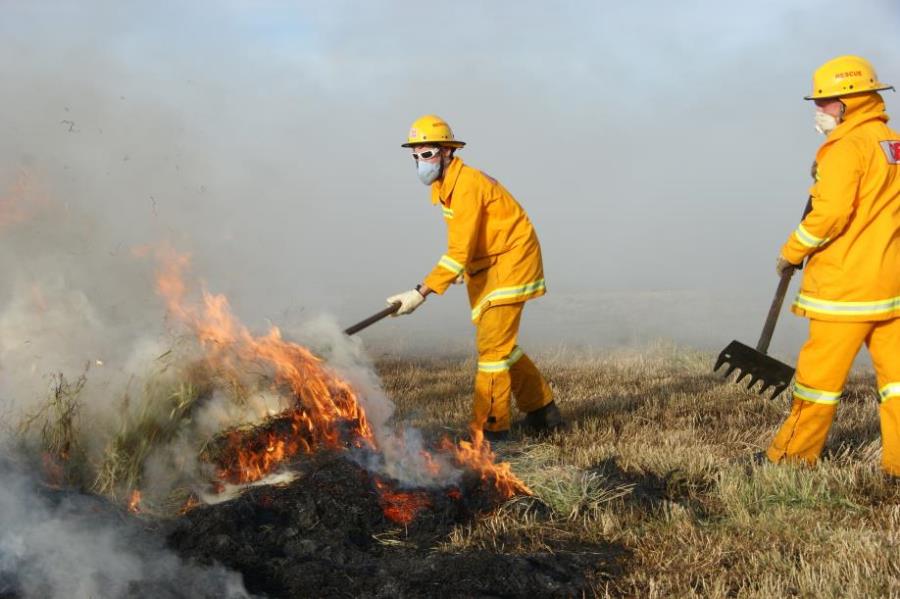
Victorian farmers have a spring in their step with the onset of strong seasonal growth of pastures and crops, but CFA has warned them to exercise caution when cutting, baling and storing hay.
The most recent seasonal outlook for spring, released late last month by the Australasian Fire and Emergency Service Authorities Council (AFAC), shows that average to above average rainfall is expected to promote strong vegetation growth across the state during spring.
Chief Officer Jason Heffernan said the forecast indicated farmers could expect greater yields and hopefully a successful hay season.
“Add to that the current high demand for hay – in part due to the mouse plague in NSW wreaking havoc on stored hay in that state – and a lot of farmers are growing hay right across Victoria right now,” he said.
“Whether you’re a seasoned hay grower or getting into it more recently, it’s really important to take care of your hay and crops this fire season.”
CFA volunteer firefighters responded to dozens of haystack fires across the state last year.
Chief Officer Heffernan said haystack fires can start quite easily from lightning strikes or sparks from equipment and machinery, but a major source of ignition is spontaneous combustion of the haybales themselves.
Spontaneous combustion can occur when hay has either not properly dried before baling, or has been exposed to rain or damp conditions, meaning moisture content in the bales is higher than the recommended levels.
“This can happen to any hay bales, regardless of size, and it is something farmers can help prevent,” Chief Officer Heffernan said. “After baling, make sure you check the heat and smell of the bales before stacking them into haysheds or large external stacks, and leave any suspect bales separate from the rest.
“By doing so, you’re not just protecting yourself from the financial impact of losing valuable fodder, you’ll also be helping your local brigade and community as haystack fires often occupy crucial firefighting resources during the season when CFA volunteer firefighters are required to monitor haystack fires for several days to make sure smouldering fires don’t spread,” he said.
Important Tips
- It is important to ensure hay is well cured before bailing.
- Know the history of the hay you purchase.
- Keep haystacks to a limited size, and don't stack hay right to the top of a hay shed. Allow some air to circulate at the top - this helps to carry away moisture.
- Monitor moisture and temperature of your hay regularly.
- Watch for unusual odours such as pipe tobacco, caramel, burning or musty smells.
- Store hay in separate stacks or sheds away from farm equipment and other buildings.
- Keep your hay dry. Protect it from rain, leaking rooves or spouts, and runoff. Cover stacks with tarps or hay caps.
Temperature Guide – what to do when your hay is overheating
Use a thermometer in a probe or insert a crowbar into the middle of the stack for 2 hours
- Less than 50°C (can handle bar without discomfort): Check temperature daily.
- 50°C - 60°C (can only handle crowbar for short time): Check temperature twice daily. Remove machinery from shed.
- 60°C - 70°C (can touch bar only briefly): Check temperature every 2-4 hours. Move hay to improve air flow.
- Over 70 °C (bar is too hot to hold): Potential for fire. Call 000 immediately. Avoid walking on top of haystack.
For more information please visit: https://www.cfa.vic.gov.au/plan-prepare/hay-and-fire-safety
| Submitted by |
CFA News & Media |